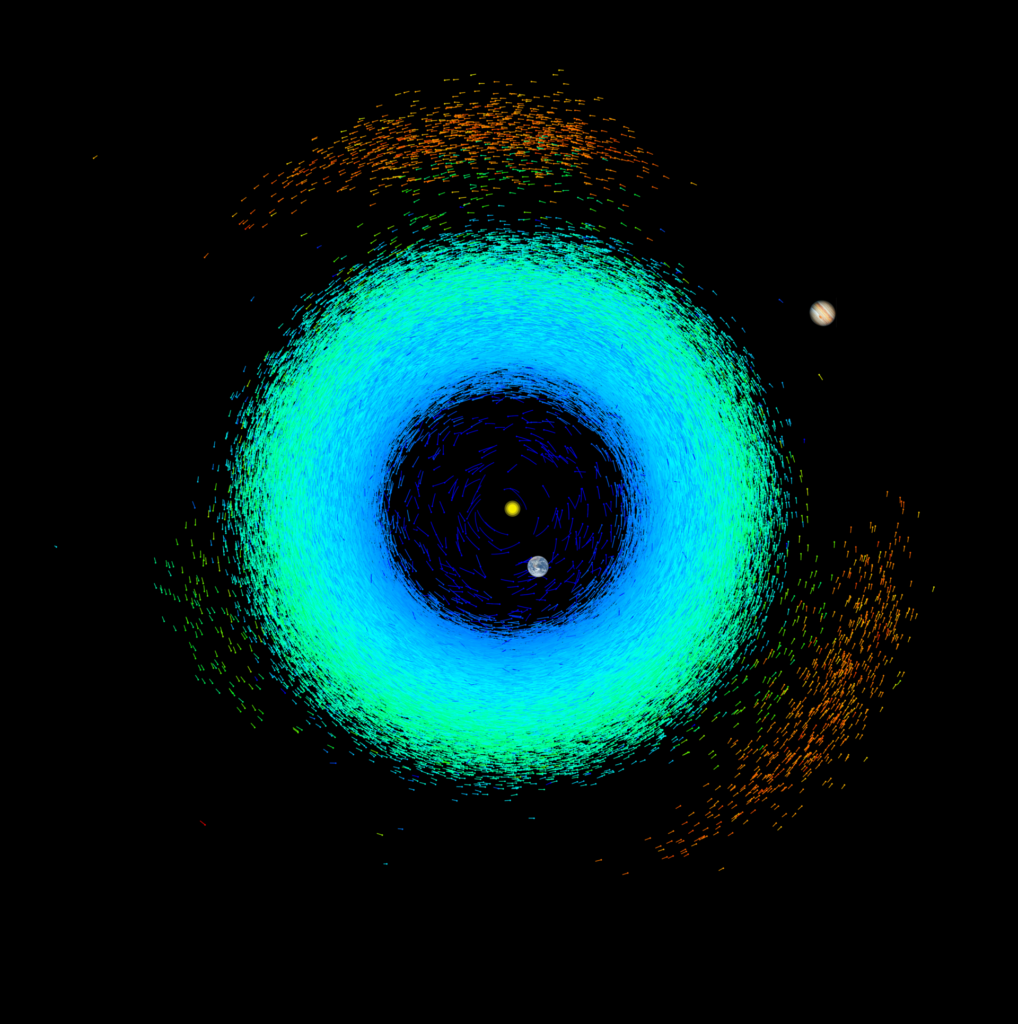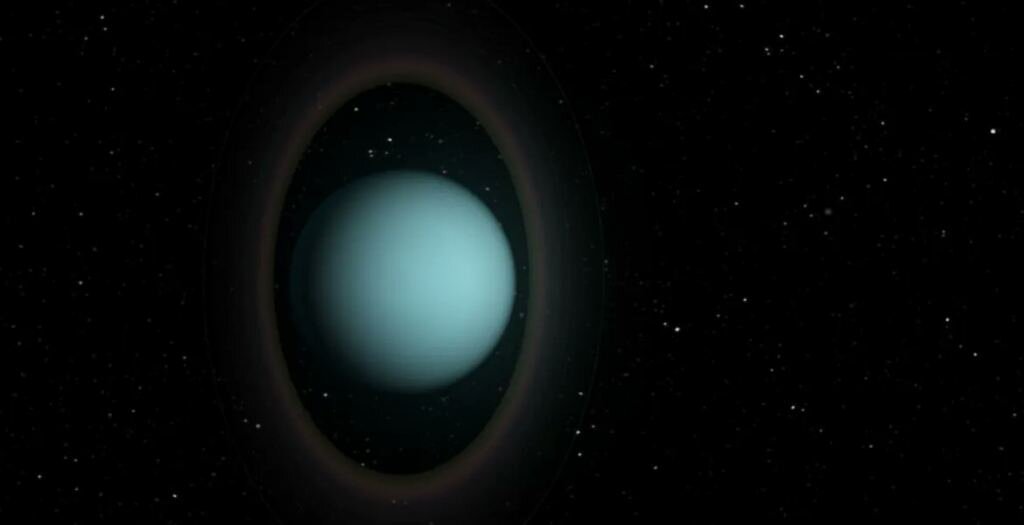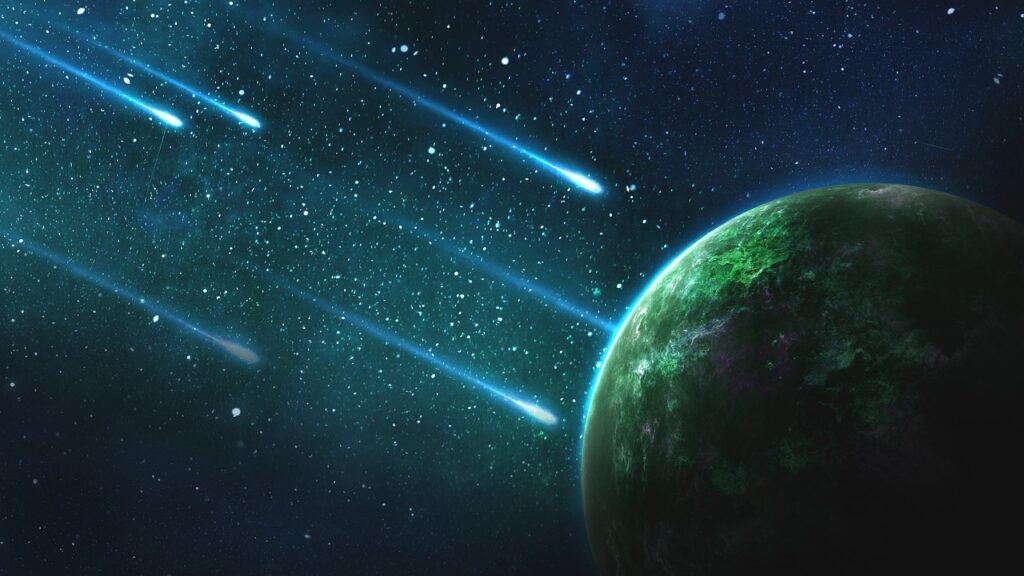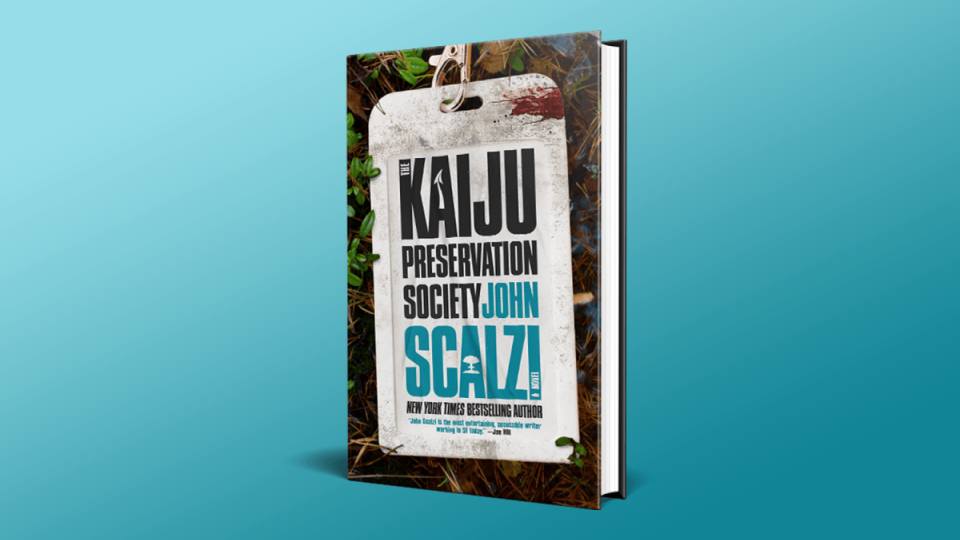A star cataloged as Gliese 781 is approaching our solar system and in slightly more than a million years from now, will reach the Oort Cloud, likely disrupting the orbits of icy bodies that could head toward Earth. Plus, an Indian launch, Asteroid Day, understanding our ice giants, and a review of Kaiju Preservation Society by John Scalzi.
Podcast
Show Notes
India launches multi-mission payload
- ISRO press release
Astronaut exercise is difficult but valuable
- Space health: The path of most resistance could help limit bone loss during spaceflight (EurekAlert)
- Six months in space leads to a decade’s worth of long-term bone loss (Science News)
- “Incomplete recovery of bone strength and trabecular microarchitecture at the distal tibia 1 year after return from long duration spaceflight,” Leigh Gabel et al., 2022 June 30, Scientific Reports
Asteroid Day 2022
- ESA press release
Mapping ice giants by their rings
- The Rings of Uranus and Neptune Could Help Map Their Interiors (Universe Today)
- “Ring Seismology of the Ice Giants Uranus and Neptune,” Joseph A. A’Hearn et al., accepted to The Planetary Science Journal (preprint)
Modeling convergent plate boundaries
- Tectonics of convergent plate margins: New insights into continental geology (EurekAlert)
- “Tectonic evolution of convergent plate margins and its geological effects,” Yongfei Zheng, Yixiang Chen, Renxu Chen, and Liqun Dai, 2022 May 20, Science China Earth Sciences
Comet storm due in 1 Million Years
- Roaming Star Could Rain Millions of Comets Down on Earth in Future Doomsday (Newsweek)
- “Gliese 710 will pass the Sun even closer,” Filip Berski and Piotr A. Dybczyński, 2016 November 15, Astronomy & Astrophysics
Transcript
There seem to be a whole lot of asteroids in the news.
Yup! This is because June 30 was Asteroid Day and everyone wanted to get in their favorite rocky story.
Like how ESA wrote about one of the many hazardous asteroids they track, 2021 QM1.
We also have geology and some insight into Uranus and Neptune from their rings.
And a rocket launch that should have been rocket launches, thanks to the Florida weather.
All of this and more, right here on the Daily Space.
I am your host Dr. Pamela Gay.
And I am your host Erik Madaus.
And we’re here to put science in your brain.

In only their second launch of 2022, the Indian Space Research Organization (ISRO) launched the PSLV C53 mission into equatorial orbit from the Satish Dhawan Launch Center’s Second Launch Pad in Sriharikota, India. The launch occurred at 00:32 UTC on June 30. PSLV C53 used the lightest version of the PSLV, the Core Alone. Larger versions of the PSLV use two, four, or six boosters of two different lengths.
This mission was contracted by New Space India Limited, a company started by the Indian government to encourage the country’s private space industry. Onboard the rocket were three payloads for different government agencies and universities in Singapore. One, DS-EO, is an optical imaging satellite that will be used by the Singaporean government for humanitarian and disaster relief. Neu-SAR is a commercial synthetic aperture radar satellite, the first one from Singapore. The last separable payload on PSLV C53 is a 2.6-kilogram CubeSat from the NTU School of Electrical and Electronic Engineering.
In addition to the three free-flying normal satellites, the rocket also flew six payloads integrated on its fourth stage, which will act as a satellite bus, providing power, communications, and propulsion. Compared to the regular upper stage it has solar panels and an extra battery, sun sensors, gyros, and other components. Compared to other times it has flown, the one on C53 is three-axis stabilized during this portion of the mission for the first time. Two of the six payloads on the PSLV Orbital Experimental Module are from Indian startups.

Satellites are cool and all, but human spaceflight gets all the attention. One of the problems we’ve known about when humans spend a lot of time in space is that their bones don’t do super well. Bones are made of living material, and they stop growing when not exercised enough — such as when in space. This causes problems on the astronauts’ return to Earth’s gravity.
A new study in the journal Scientific Reports studied seventeen astronauts, male and female, before and twice after going into space. The researchers specifically studied the bone mass and structure of the shin bone (tibia) using an advanced scanning method called high-resolution peripheral computed tomography. Their results showed that astronauts who had been in space for six months or less recovered mass and structure within a year, but astronauts who had been in space for more than six months never recovered back to previous levels.
To be clear both groups did lose bone structure which is one of those features that once lost can never grow back, but the less than six months group rapidly reinforced the remaining structure. The bone loss in the second group was equivalent to aging ten years. Weight lifting could solve this problem, and indeed, astronauts on the International Space Station (ISS) already do this, using a special resistance machine.
The team from the University of Calgary who performed this study is going to expand their research to astronauts who recently returned from a year in space – NASA’s Mark Vande Hei and Roscosmos’s Pyotr Dubrov.

Yesterday, June 30, was Asteroid Day, an annual reminder that one day an asteroid will hit the Earth and end life as we know it. That’s not a happy image to put in your head, but humanity is trying to prevent that or at least give us some more warning. In fact, a couple of weeks ago, we talked about an exercise where scientists “discovered” the Apophis asteroid and tracked it from scratch.
And now a new report released on Asteroid Day by the European Space Agency has announced they tracked and gathered enough data on an asteroid to determine that it won’t hit Earth, at least not until after 2052.
The asteroid in question is 2021 QM1, one of many asteroids discovered every night. 2021 QM1 is a 50-meter asteroid in a concerning, near-Earth orbit. With only a few days’ worth of images, the orbital predictions said that the asteroid might – might – hit the Earth in 2052. So scientists got emergency time on one of the biggest telescopes in the world, the Very Large Telescope (VLT) in Chile. But they had to wait a little bit because the asteroid was rendered invisible by the Sun’s glare and wouldn’t be visible until later.
Once it was away from the Sun, the astronomers at the European Southern Observatory where the VLT is located had more problems. Tiny 2021 QM1 would be difficult to see between all of the background stars because of the particularly dense patch of the Milky Way it was in front of.
However, on May 24, 2022, they found the asteroid again, at an incredibly dim magnitude 27. According to ESA, that is “ 250 million times fainter than the faintest stars visible to the [unaided] eye from a dark spot.”
With this further orbital arc, the asteroid’s impact in 2052 was ruled out, though there are still 1,377 potentially hazardous asteroids on ESA’s list. Friendly reminder – none of those are predicted to hit the Earth.
And now let’s look at how vibrations and waves are used to understand planets in our solar system.
More and more attention is being paid to our two ice giants – Uranus and Neptune – despite the current lack of missions being sent to the two worlds. While Venus is getting all the spacecraft love, scientists are trying to do what they can with what they have, data-wise, to understand the icy, blue worlds. And that’s incredibly difficult to do when the only spacecraft to have collected data were merely passing through the systems.

Literally on top of that issue, the ice cover on the two worlds – they aren’t called ice giants for nothing – makes it difficult to “see” the interiors of the planets. And both of these issues have led a large team of scientists to get creative, and their results can be read in a preprint on arXiv led by Joseph A’Hearn.
We’ve talked before about how a different team of scientists was working on using seismic waves in Saturn’s ring system to gain a better understanding of the gas giant’s interior. That technique could work at both Uranus and Neptune, who also have their own, smaller ring systems, but we have tons of data about Saturn’s rings from Voyager and Cassini. Honestly, Cassini in particular gathered petabytes of data on Saturn and its moons, so there is a lot of information to work with.
The method works thusly. Inside the planet, there are gravitational oscillations. One particular pattern of oscillations is known as “normal mode”, and that pattern occurs when every part of the planetary system begins to oscillate at the same frequency. The effects of the wave can be felt throughout the entire planetary system, including within the rings. And those effects can then be measured and mapped to the interior of the planet.
As we mentioned before, this technique has successfully been used on Saturn’s rings.
And then there are moons that are shepherding the rings. This occurs in both Saturn’s rings and in the rings of Uranus and Neptune. Those moons will also move at the same resonance and can even create their own that will show effects in the rings. But we need more data.
Hey, NASA! We really need an ice giant orbiter or two.

One of the reasons we know that using seismic waves to map the interior of a planet is that we use similar techniques here on Earth. Earth may not have rings, but it does have plate tectonics that leads to earthquakes that create waves that move through the interior of the planet and provide a wealth of information. Again, this kind of analysis is pretty simple when you have enough data.
And now in a new paper published in the journal Science China Earth Sciences, a team of researchers has particularly focused on the effects of convergent plate margins, both active and fossil. Wait. Fossil plate boundaries? That’s a thing?
Apparently so.
According to this research, there are three stages in the formation and evolution of convergent plate boundaries. The first stage is characterized by what we call low-angle subduction, where the down-going plate is moving under the upper plate at an almost but not quite parallel angle. This type of convergent boundary gives rise to Alpine-type mountains but not magmatic volcanic arcs.
The next stage of subduction occurs with higher-angle subduction, where the down-going plate is sharply tilted with respect to the upper plate. And those situations are what create magmatic arcs as seen in around the Pacific Ring of Fire, with numerous volcanoes in Russia, Japan, Indonesia, Chile, Argentina, and even Alaska.
But then, there is a post-stage to both of those subduction types. And that is actually characterized by rifting as the boundary changes types. The subducted plate is still there, becoming thinner and more pliable from the heat of the mantle until it begins to founder. That means that the plate breaks away and leaves a gap where it once was being subducted. And instead, the hot, plastic mantle begins to well up through the gap and push the two plates apart.
But that leftover bit that is foundering and not attached? That’s a fossil plate. There is one under North America called the Farallon plate leftover from the formation of California and much of the west coast.
And this process repeats itself over and over in the history of our planet, leading to a mechanism that exchanges heat and energy between the interior and the surface.
Plate tectonics is fascinating. And we’re the only planet in our solar system that has it.
Of course, there are things outside our solar system that can affect Earth, and I’ll talk about that next before I get to this week’s review.

One of the really cool things that are possible with modern star catalogs is our ability to see not just where stars are now, but also where they are headed. With knowledge of both where stars are and where they are going, we can begin to run models that describe how stars will interact as they orbit for the next few millions of years.
And one star, Gliese 710, is headed our way.
1.29 million years from now it will pass within 0.06 light-years or 4000 AU of our Sun. As a reminder, our galaxy reaches out to 100,000 AU, which means this star will enter our solar system, and its gravity will disrupt the outermost solar system as it passes through the Oort Cloud.
The Oort cloud is full of icy objects — the stuff that comets are made of often originates from right where Gliese 710 is going to pass. Models suggest that this star in the Oort cloud scenario will send countless comets hurtling in toward the inner solar system, where we live.
This is not good. Researcher E.A. Milne puts it this way in Newsweek: We have Jupiter which will hoover up many of these, much like it did in 1994 when it hoovered up Comet Shoemaker/Levy before it could come any closer to us, but the sheer numbers are such that if anything astrophysical has the potential to utterly destroy our biosphere, it will be one of these millions of comets which will be coming our way in only one million years’ time!
In trying to find the original research paper associated with this story – which we had brought to us by one of our awesome audience members – we discovered this story dates back at least to 2016 when it was published by Berski & Dybczynski, with refined data coming out with each update of the Gaia star catalogs. With the original research predating this show, we missed it when it broke but will be continuing to follow it in the years to come.
Review

If I seemed a bit too full of joy as I discussed that future comet attack, it’s because I knew this review was coming. Today, I get to bring you a fun romp through parallel universes from author John Scalzi. Written during the pandemic, this story acknowledges are current reality full of masks, DoorDash, and theaters that continue to struggle to keep their doors open in the face of COVID. These realities are acknowledged and then brushed aside as we follow our lead character, Jamie, through a thin point in reality and jump into another parallel reality.
There are two different kinds of multiverse. There is the standard idea that our universe is just one of many that emerged from come “quantum foam”. Each universe likely has its own starting values, like the seed on a Minecraft server, and from these starting values radically different universes – most of which will self-destruct rather quickly – can spring into reality.
I firmly believe we exist in this kind of a multiverse, but this kind of a multiverse isn’t all that interesting to sci-fi writers because it isn’t a great plot point to go through to another universe and instantly die.
This is where the Many Worlds Interpretation (MWI) of quantum mechanics and all its branching universes became super interesting to writers. In this interpretation, every choice that is made splits reality into two or more versions where each possible outcome is able to happen somewhere. In this theory, there are universes somewhere out there in which that dino-killing asteroid never hit the Earth; realities where everything could evolve in radically different ways. And it is in one of these alternate realities where evolution looked radically different that our hero finds themselves working one unexpected day.
Working like so many nature conservationists to try and help giant, occasionally very deadly critters figure out how to breed and keep their populations going.
Hijinks of course ensue, and all the standard characters are on hand to do all the expected things. There is the rich jerk bent on doing evil to get richer. There are the scientists who just want to study things and don’t always have the best social skills. There are adventure scenes that involve trying to save the Earth from this alternative Earth’s dangers, and there are military groups that have to be defeated by spunky scientists. This book is comfort food. Comfort food with kaiju.
And right now, this is the book we need, even if it is a better book than we deserve.
Just to be clear, this is not a book that is going to win literary awards or change how you see our society; it is just a fun romp into a reality so unlike our own that it offers a lovely – and occasionally gruesome with Kaiju bits – reality.
The audio version of this book is narrated by Wil Wheaton, who brings just the right Gen-X tone of sarcasm and “oh what now” to the characters. His lack of gravitas is perfect for this very serious reality with humans who use humor as a strategy to keep going in a reality that will try to eat them.
If you listen to this story, however, you will miss one of Scalzi’s interesting writing habits. Told from the first-person point of view with minimal descriptive language, this story never lets you know your narrator’s pronouns. You, no matter how you define yourself, can find yourself in this story.
So, if you want to go deal with deadly giant animals instead of the evolving pandemics sweeping our planet, go read Scalzi’s Kaiju Preservation Society and see yourself having an adventure.
This has been the Daily Space.
You can find more information on all our stories, including images, at DailySpace.org. As always, we’re here thanks to the donations of people like you. If you like our content, please consider joining our Patreon at Patreon.com/CosmoQuestX.
Credits
Written by Pamela Gay, Beth Johnson, Erik Madaus, and Gordon Dewis
Hosted by Pamela Gay, Beth Johnson, and Erik Madaus
Audio and Video Editing by Ally Pelphrey
Content Editing by Beth Johnson
Intro and Outro music by Kevin MacLeod, https://incompetech.com/music/


 We record most shows live, on Twitch. Follow us today to get alerts when we go live.
We record most shows live, on Twitch. Follow us today to get alerts when we go live.